Are you overwhelmed with the pile of fallen leaves in your yard every autumn? Did you know that leaves are a rich source of carbon, an essential component for composting? This article walks you through the process of transforming those heaps of leaves into nutrient-packed compost to enrich your garden soil.
Get ready to turn waste into treasure and make your garden thrive like never before!
Key Takeaways
- Composting with leaves provides nutrient – rich soil amendment, improves soil structure and moisture retention, reduces the need for chemical fertilizers, and helps to reduce landfill waste.
- Shredding leaves before composting them speeds up the decomposition process.
- Layering leaves with other organic materials like grass clippings or food waste creates a balanced mix of carbon and nitrogen for faster decomposition.
- Maintaining proper moisture and turning the compost pile regularly are essential for successful leaf composting.
Benefits of Composting with Leaves
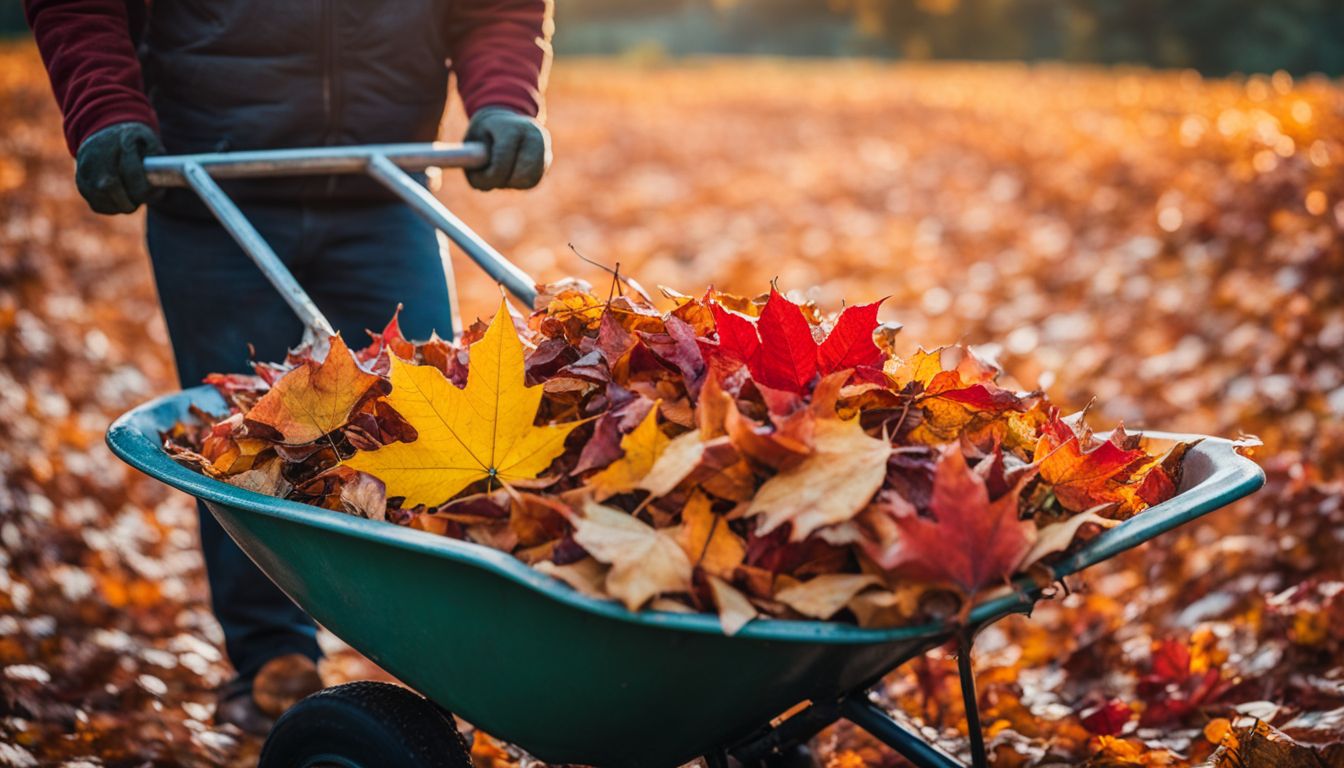
Composting with leaves provides nutrient-rich soil amendment, improves soil structure and moisture retention, reduces the need for chemical fertilizers, and helps to reduce landfill waste.
Nutrient-rich soil amendment

Compost made from leaves is full of nutrients. These nutrients help plants grow big and strong. When the soil gets these nutrients, it becomes better for planting. By adding leaf compost to your garden, you feed your plants natural food.
This means no need for store-bought plant food or chemicals that may harm nature. Leaf compost also has carbon which helps hold water in the soil longer. Your plants will never go thirsty!
Improves soil structure and moisture retention
Composting with leaves can improve the structure of your soil and help it retain moisture. When you add composted leaves to your garden, they break down and create a rich, crumbly texture that allows for better water infiltration and root penetration.
This means that your plants will have an easier time accessing the nutrients and water they need to grow strong and healthy. Additionally, composted leaves act as a sponge, holding onto moisture in the soil for longer periods of time, reducing the amount of watering needed.
This is especially beneficial during dry spells or in areas with sandy soil that tends to drain quickly. So when you compost your leaves, you’re not only recycling organic waste but also improving the quality of your garden soil.
Reduces the need for chemical fertilizers
Composting leaves can help reduce the need for chemical fertilizers in your garden. When leaves are composted, they break down and release valuable nutrients into the soil. This nutrient-rich compost acts as a natural fertilizer, providing essential elements like nitrogen, phosphorus, and potassium to your plants.
By using leaf compost in your garden, you can promote healthy plant growth without relying heavily on synthetic fertilizers. This not only saves you money but also reduces the risk of harmful chemicals leaching into groundwater or causing environmental damage.
Reduces landfill waste

Composting leaves is a great way to reduce the amount of waste that ends up in landfills. When we compost leaves, they break down naturally and become nutrient-rich soil. This means that instead of throwing them out, we can turn them into something useful for our gardens.
By composting leaves, we are not only helping the environment by reducing landfill waste but also creating healthy soil that can benefit our plants and gardens. So instead of bagging up those fallen leaves, consider composting them instead!
How to Compost Leaves

To compost leaves, shred them for faster decomposition, layer them with other organic materials, ensure proper moisture and aeration, and regularly turn the compost pile. Read on to learn more!
Shred leaves for faster decomposition
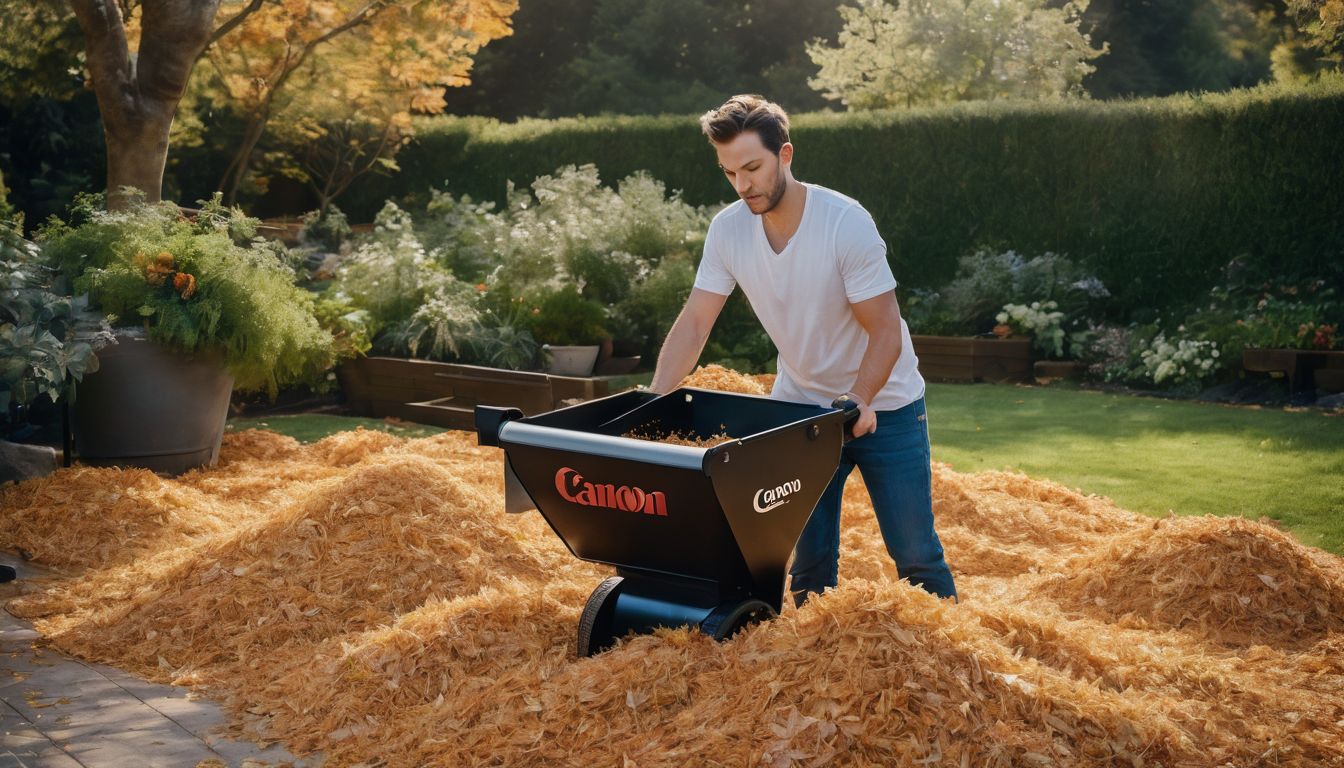
Shredding leaves is an amazing way to speed up the composting process. When you shred the leaves into smaller pieces, it creates more surface area for the microbes in your compost pile to break them down.
This means that the shredded leaves will decompose much faster than whole leaves. Additionally, shredding the leaves helps to create a more uniform mixture in your compost pile, ensuring that all of the ingredients are breaking down at a similar rate.
So grab your shredder or run over those leaves with a lawnmower before adding them to your compost pile for quick and efficient decomposition!
Layer leaves with other organic materials
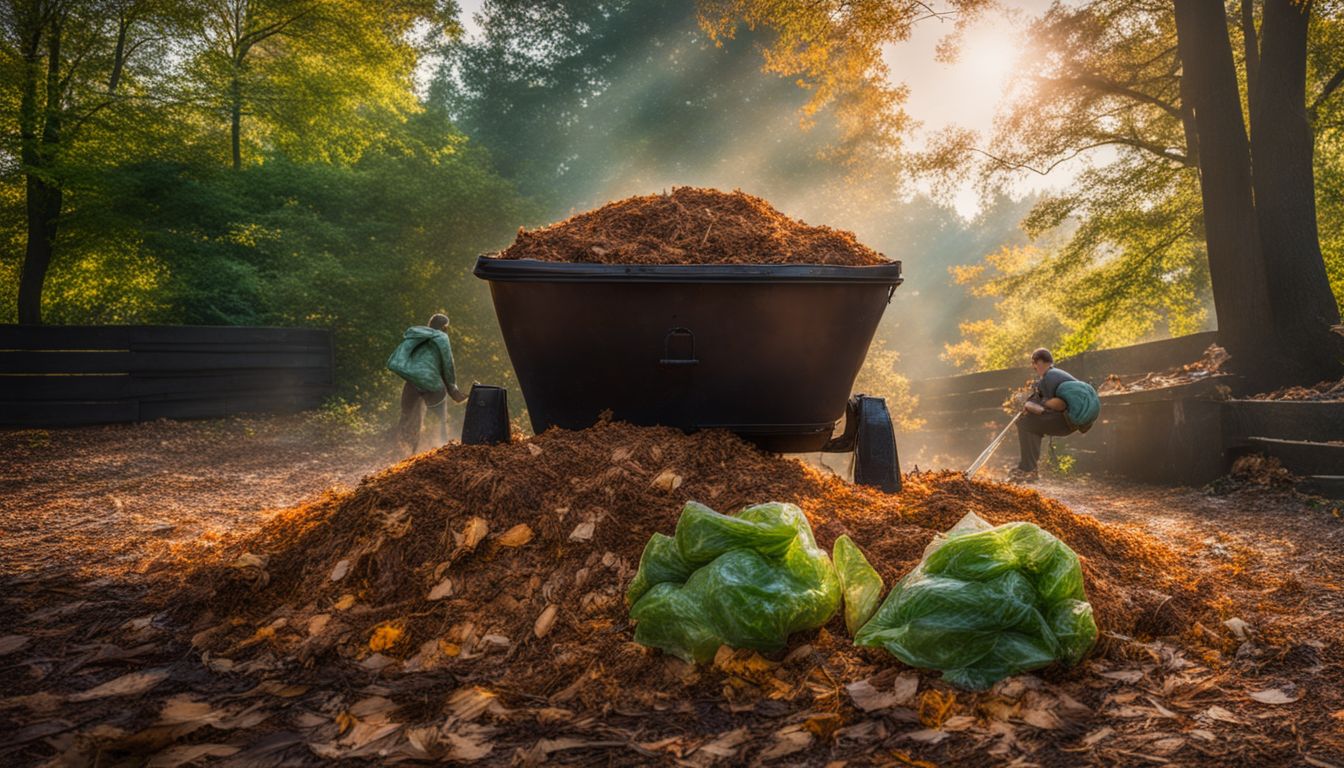 Layering leaves with other organic materials is an important step in composting. By combining leaves with things like grass clippings or food waste, you create a balanced mix of carbon and nitrogen.
Layering leaves with other organic materials is an important step in composting. By combining leaves with things like grass clippings or food waste, you create a balanced mix of carbon and nitrogen.
This balance helps to speed up the decomposition process and ensures that your compost has the right nutrients for plants. As you layer the leaves, make sure to alternate between “browns” (like leaves) and “greens” (like grass clippings), as this creates optimal conditions for microbial activity.
The layers should be about six inches thick and well-mixed to allow air circulation. So remember, when composting leaves, don’t forget to layer them with other organic materials for fast and amazing results!
Ensure proper moisture and aeration

To ensure successful composting with leaves, it’s important to maintain proper moisture and aeration. The compost pile should be damp, like a wrung-out sponge, but not too wet or dry.
Water the pile regularly to keep it moist. If it becomes too dry, the decomposition process slows down. Adequate air circulation is also crucial for the breakdown of organic matter.
Turning the compost pile every few weeks helps to increase oxygen levels and promotes decomposition. By ensuring both moisture and aeration in your composting process, you can create nutrient-rich soil amendment that will benefit your garden.
Turn the compost pile regularly

Regularly turning the compost pile is an important step in the leaf composting process. Turning the pile helps to mix and aerate the materials, allowing for faster decomposition. This also helps to distribute moisture and heat throughout the pile, promoting optimal conditions for microbial activity.
By turning the compost regularly, you can ensure that all parts of the pile are breaking down evenly. Remember to use a pitchfork or shovel to carefully turn over the materials, making sure to bring material from the outer edges into the center where it can decompose more efficiently.
Regular turning will help speed up decomposition and result in nutrient-rich compost for your garden.
Best Practices for Composting Leaves
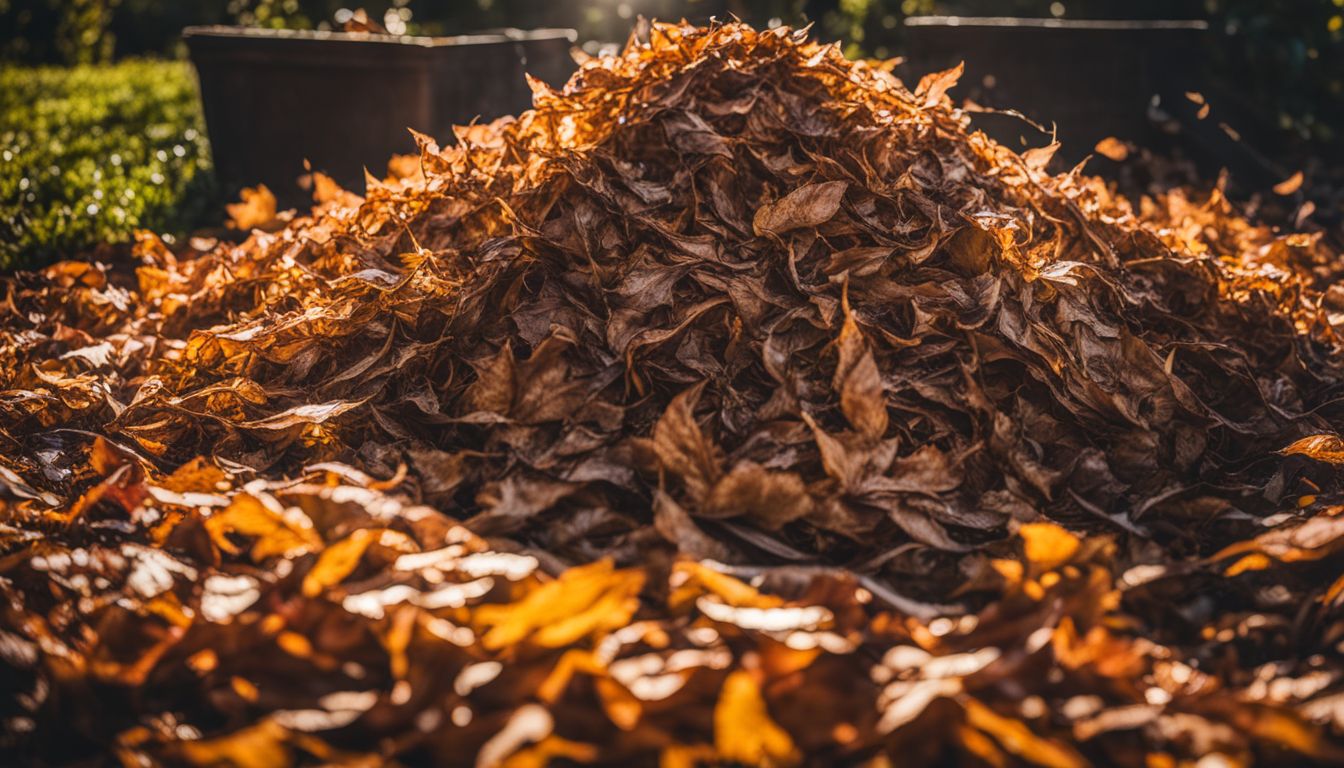
Shred leaves before composting for faster decomposition and optimal use.
Avoid composting diseased or pest-infested leaves

To ensure a successful composting process, it is important to avoid composting diseased or pest-infested leaves. These leaves can contain harmful pathogens or pests that may spread and contaminate the rest of your compost pile.
Instead, dispose of these leaves in the trash or burn them if permissible in your area. By doing so, you’ll prevent any potential issues and maintain a healthy and productive composting environment for your garden.
Optimal leaf-to-green ratio
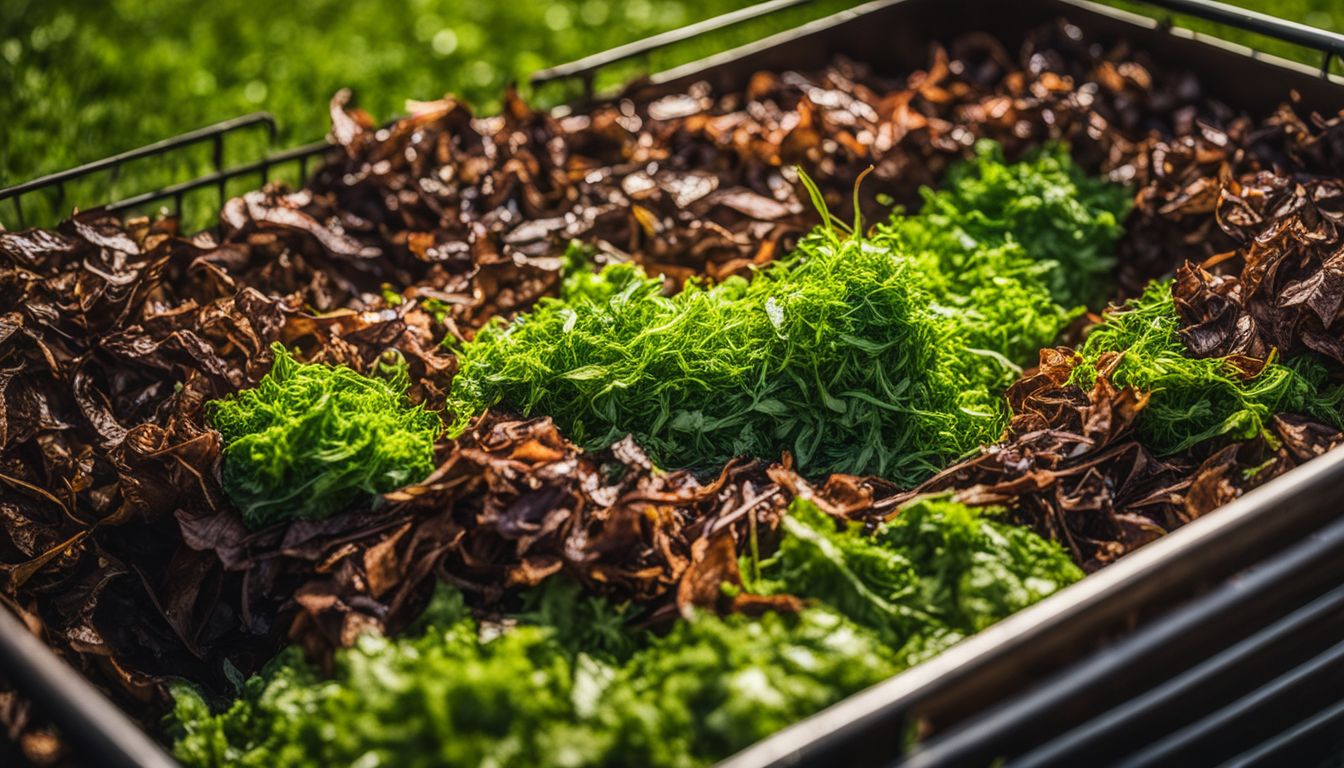
To achieve optimal composting with leaves, it’s important to have the right balance of leaves (carbon-rich “browns”) and green materials (nitrogen-rich “greens”). The ideal leaf-to-green ratio is around 30 parts carbon to 1 part nitrogen.
This means that for every bag of shredded dry leaves you add to your compost pile or bin, you should also add a smaller amount of grass clippings or food waste as a nitrogen source.
Maintaining this balanced ratio will help speed up the decomposition process and ensure that your compost has enough nutrients for plants when it’s ready to be used in the garden.
Consider using a compost bin or pile

Using a compost bin or pile is a great idea when composting leaves. It provides a designated space for the decomposition process and helps contain the materials. A compost bin or pile creates an ideal environment for microbes to break down the organic matter into nutrient-rich compost.
It also helps with managing moisture levels and temperature, promoting faster decomposition. Whether you choose a ready-made compost bin or build your own, using one will make your leaf composting experience more efficient and organized.
Monitor temperature and moisture levels
To successfully compost leaves, it’s important to monitor the temperature and moisture levels. The ideal temperature for a compost pile is around 135°F (57°C). This heat helps break down the organic materials more quickly.
You can use a compost thermometer to check the temperature regularly and make adjustments if needed.
In addition to temperature, moisture is also crucial for successful composting. The moisture level in the compost pile should be similar to that of a damp sponge. It shouldn’t be too wet or too dry.
To maintain proper moisture, you can water your compost pile occasionally or cover it during heavy rain to prevent excess saturation.
Common Mistakes to Avoid
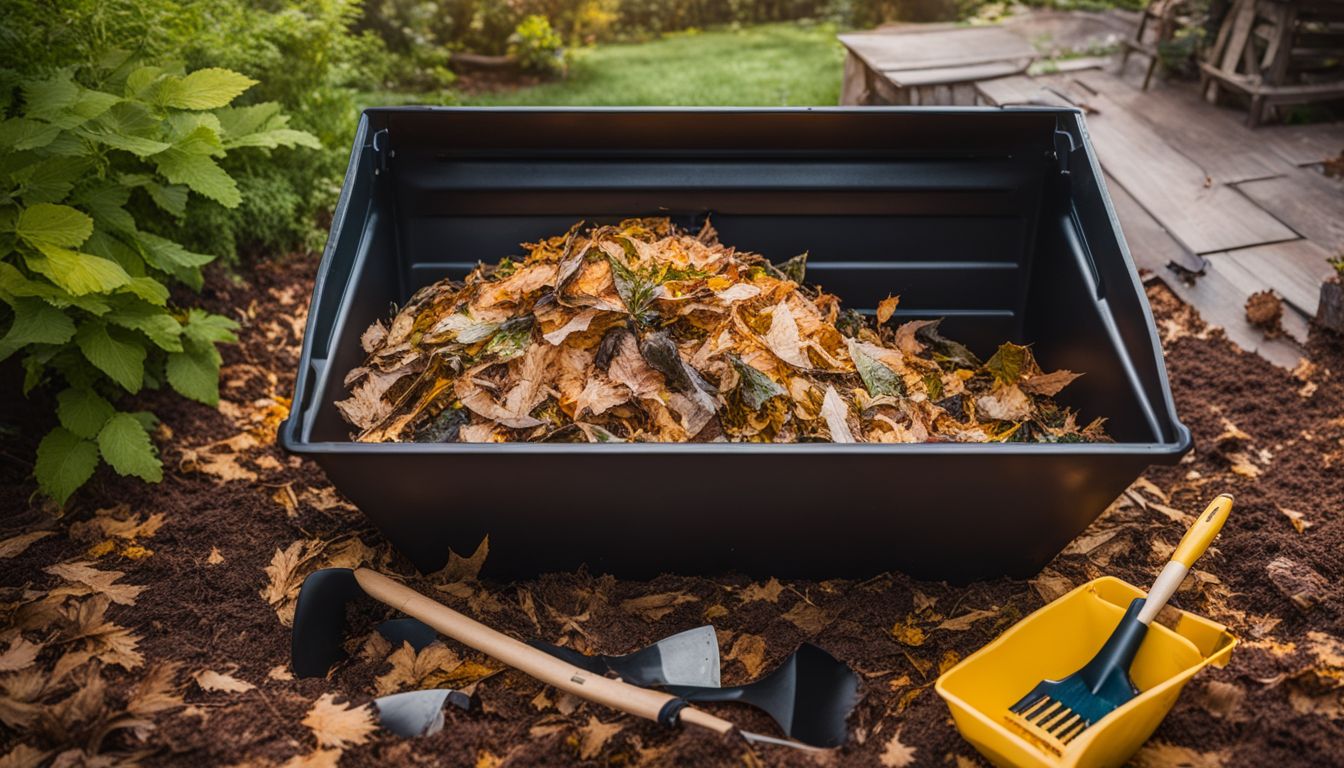
People often make the mistake of composting leaves without shredding them first, which slows down the decomposition process.
Composting leaves without shredding them first
Composting leaves without shredding them first can slow down the decomposition process. Shredding dry leaves before adding them to your compost pile or bin helps break them down into smaller pieces, allowing for faster and more efficient decomposition.
When leaves are left whole, they tend to form layers that restrict air circulation and make it harder for microorganisms to break them down. By shredding the leaves, you create smaller particles that provide more surface area for microbial activity, helping to speed up the composting process.
So remember, shred those dry leaves before adding them to your compost!
Adding too many leaves without enough green materials
Adding too many leaves without enough green materials can slow down the composting process. Leaves are considered high carbon or “browns” in the compost pile, while green materials like grass clippings and food waste provide nitrogen.
The ideal ratio for successful composting is about 3 parts browns to 1 part greens. If there aren’t enough greens present, the decomposition of the leaves will take longer as they break down slowly on their own.
It’s important to balance out the carbon-to-nitrogen ratio by adding more greens or nitrogen-rich materials to ensure a healthy and efficient compost pile.
Allowing the compost pile to become too dry or too wet
If your compost pile becomes too dry or too wet, it can affect the decomposition process. When the pile is too dry, it will slow down the breakdown of organic materials. This is because the microorganisms that break down the waste need moisture to survive and thrive.
On the other hand, if the pile becomes too wet, it can lead to a smelly and slimy mess. Excess moisture prevents proper air circulation in the pile, which is essential for decomposition.
To avoid these issues, make sure your compost pile has enough moisture but isn’t overly saturated. Regularly check its moisture levels and adjust accordingly by adding water or turning the material to promote aeration.
Neglecting to turn the compost pile regularly
If you forget to turn your compost pile regularly, it can slow down the decomposition process. When the pile isn’t turned, air circulation is restricted and the materials in the pile don’t mix well.
This can lead to a lack of oxygen, which is important for the composting microbes to thrive. Additionally, without turning the pile, moisture levels may become uneven, causing parts of the pile to become too wet or too dry.
Turning the compost pile regularly helps ensure that all materials break down evenly and efficiently. So don’t forget to give your compost pile a good turn every now and then!
Using Leaf Compost in the Garden
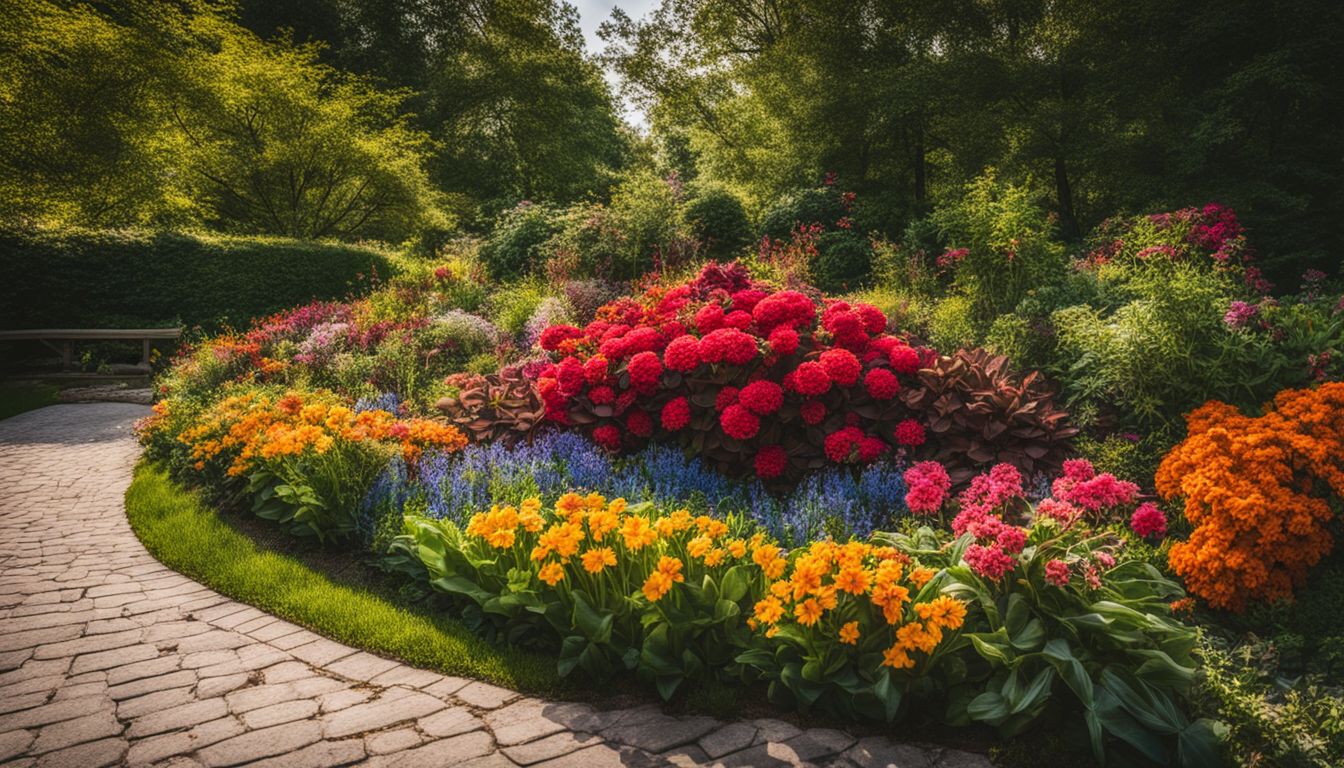
Apply leaf compost to your garden for improved plant health and growth. Learn the best application methods, timing, and benefits of using this nutrient-rich soil amendment.
Application methods
To apply leaf compost in the garden, there are a few methods you can use. One way is to spread a thin layer of compost on top of your soil and gently rake it in. You can also mix the compost into the soil by tilling or digging it in.
Another method is to use compost as mulch around your plants, which helps retain moisture and suppress weeds. It’s important to time your application correctly, applying the compost in the spring or fall when plants are not actively growing.
As for frequency, you can apply leaf compost once or twice a year depending on your specific needs. By using these application methods, you’ll be able to reap the benefits of improved plant health and growth from your leaf compost.
Timing and frequency of application
To get the best results when using leaf compost in your garden, it’s important to consider the timing and frequency of application. Leaf compost can be applied to gardens in both spring and fall.
In the spring, you can apply a layer of leaf compost before planting new seeds or seedlings. This will help enrich the soil and provide nutrients for healthy plant growth throughout the growing season.
In the fall, applying a layer of leaf compost before winter helps protect your garden soil from erosion caused by heavy rain or snow. It also provides a protective barrier against extreme temperature fluctuations during winter months.
As for frequency, it is generally recommended to apply leaf compost once or twice a year – either in spring or fall, depending on your gardening needs. Applying too much compost can overwhelm plants with nutrients, while not enough may not provide adequate nourishment for optimal growth.
Benefits for plant health and growth
Composting leaves offers several benefits for the health and growth of plants. One major advantage is that it provides a nutrient-rich soil amendment. When leaves are composted, they break down into organic matter that releases nutrients slowly over time, providing a steady supply of essential elements for plants.
This can help improve the overall fertility of the soil and promote healthy plant development.
Additionally, composting with leaves helps to improve soil structure and moisture retention. The decomposition process breaks down the leaves into humus, which adds organic matter to the soil and improves its ability to hold onto water.
This is especially beneficial in dry climates or areas with sandy soils that struggle with retaining moisture.
Furthermore, using leaf compost in gardens reduces the need for chemical fertilizers. The nutrients released from decomposed leaves can serve as natural fertilizers, reducing reliance on synthetic products that may harm the environment or cause imbalances in nutrient levels.
Mixing leaf compost with other soil amendments
Mixing leaf compost with other soil amendments can further enhance its benefits for your garden. By combining leaf compost with other organic materials like grass clippings or food waste, you create a balanced blend of nutrients that plants need to thrive.
The nitrogen from the additional organic materials helps to speed up the decomposition process and enriches the overall nutrient content of your compost. Adding twigs or small branches can also improve air circulation within the pile, promoting faster decomposition.
This mixture can then be used as mulch or worked into your garden beds to improve soil structure, moisture retention, and provide a slow release of nutrients over time.
Conclusion
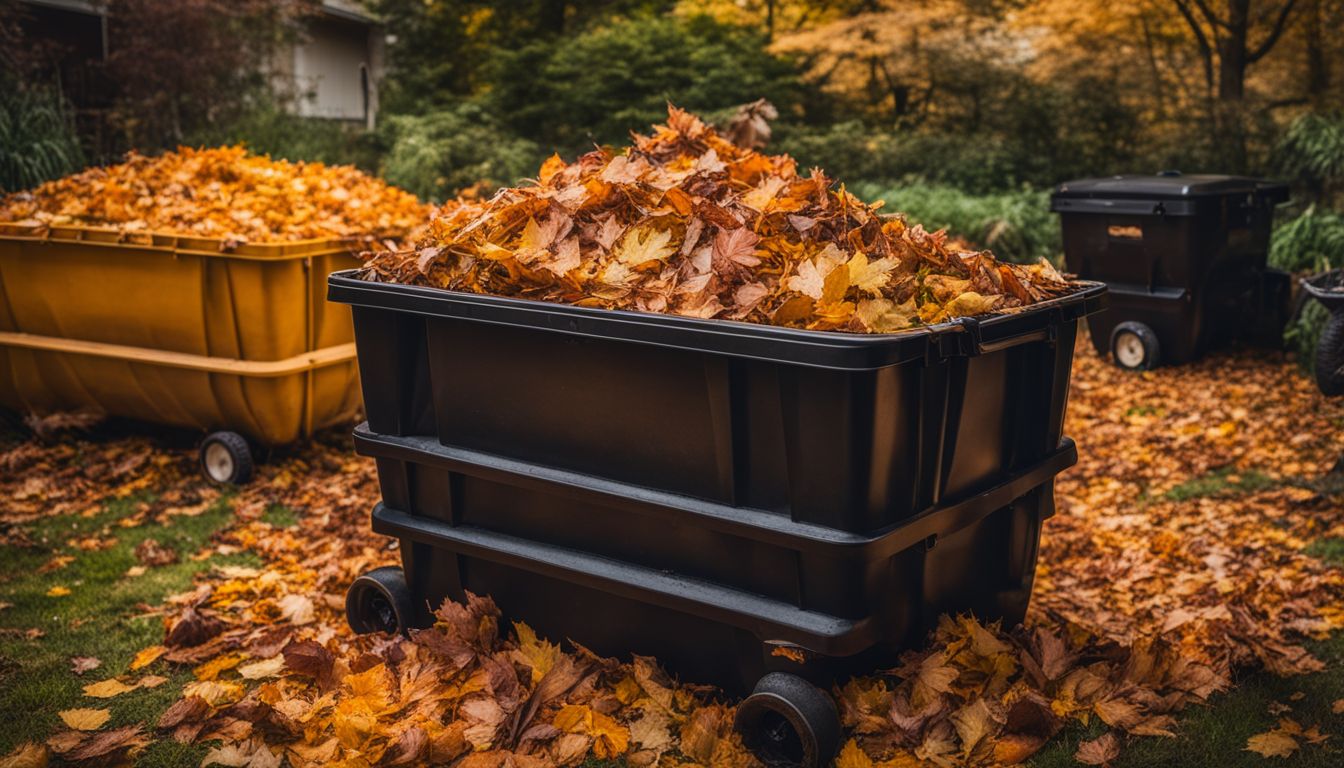
Composting with leaves is a fast and amazing way to turn your yard waste into nutrient-rich soil. By shredding the leaves, layering them with other organic materials, and ensuring proper moisture and aeration, you can create high-quality compost for your garden.
Not only does leaf composting benefit your plants, but it also reduces landfill waste and decreases the need for chemical fertilizers. Start composting with leaves today to improve your soil and contribute to a healthier environment.
FAQs
1. How can I start composting leaves at home?
You can start composting with leaves by gathering up leaf litter decomposition and setting up a center space in your yard for organic composting.
2. What are the benefits of leaf composting?
Leaf composting benefits include enrichened soil, better plant growth and it contributes to a healthier garden.
3. Can you give me some tips for mulching with leaves?
For effective mulching with leaves, ensure to shred them into small pieces before adding them onto your garden soil. This improves their break down rate.
4. What techniques do I need for leaf composting?
The methods involved in leaf composting include gathering the right mix of ingredients like green and brown materials where the leaves serve as brown ones.

As a dedicated mother and passionate software developer, she weaves her diverse experiences into captivating stories that inspire and engage readers. Emma's love for sustainable living and environmental consciousness permeates both her personal and professional life. When she's not immersed in the world of coding and software development, Emma can be found nurturing her family and tending to her thriving organic garden. Her commitment to sustainable practices extends to every aspect of her life, from repurposing household items to embracing eco-friendly technologies.










